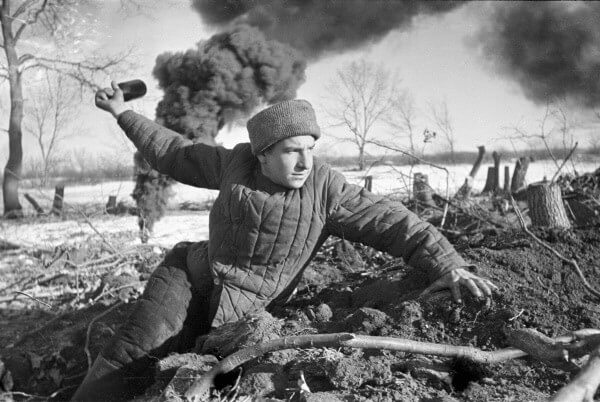
| Year | F-1: 1941 RGD-33: 1933 |
| Weapon Type | Anti-Personnel Hand Grenades |
| Origin & Designer | [@designer] |
| Numbers Produced | [@numbers_produced] |
| Crew | [@crew] |
| Calibre | [@calibre] |
| Elevation | [@elevation] |
| Traverse | [@gun_traverse] |
| Cartridge Weight | [@cartridge_weight] |
| Round Weight | F-1: 600g RGD-33: 500g (Without Sleeve) 750g (With Sleeve) |
| Barrel Length | [@barrel_length] |
| Overall Length | [@length] |
| Grenade Types | Fragmentation |
| Mount | [@mount] |
| Combat Weight | [@weight] |
| Operation | Fuse: F-1: 3.2 to 4.2 Seconds RGD-33: 3.5 to 4 Seconds |
| Cooling System | [@cooling] |
| Sights | [@sights] |
| Feed | [@feed] |
| Practical Rate of Fire | [@practical_rate_of_fire] |
| Maximum Rate of Fire | [@maximum_rate_of_fire] |
| Blank Cartridge | [@blank_cartridge] |
| Muzzle Velocity | [@muzzle_velocity] |
| Fuel Capacity | [@fuel_capacity] |
| Minimum Range | [@minimum_range] |
| Effective Range | F-1: 30m RGD-33: 10m (Without Sleeve) 30m (With Sleeve) |
| Maximum Range | F-1: 30-45m RGD-33: 30-40m |
| Armour Penetration | [@armour_penetration] |
| Bayonet | [@bayonet] |
| Traction | [@traction] |
| Variants | [@variants] |
| Notes | The F-1 (Fugasnyy Ruchnaya Granata) was based on the French Fusante No1 and was first issued to the troops in 1941. It was a standard fragmentation grenade and was kept in production right through the war and beyond. The RGD-33 (Ruchnaya Granata Degtyareva) was an earlier weapon and was a stick fragmentation grenade designed by Degtyarev. It was issued with an optional metal sleeve which fitted over the head of the grenade to give more fragmentation. |